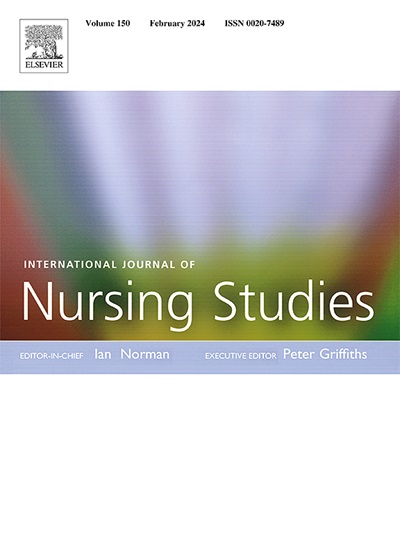Identifying critical intervention, contextual and implementation features in systematic reviews: Intervention component analysis ten years on
IF 7.1
1区 医学
Q1 NURSING
引用次数: 0
Abstract
Background
It is now widely recognised that in addition to providing robust evidence about intervention effectiveness, systematic reviews need to provide decision-makers with information about critical intervention, contextual and implementation features that support successful outcomes. Our 2015 paper introduced Intervention Component Analysis (ICA), a method comprised of three key approaches for examining trials within an effectiveness synthesis: a) an inductive approach to coding trial features; b) extraction of trialists perspectives about the strengths and limitations of features and experiences of implementation; and c) an assessment of identified features in relation to outcomes to assess which appear to be important. In this paper we reflect on how ICA has since been employed by ourselves and others to demonstrate the variety of ways it has been applied and to support further developments of the method.
Methods
In March 2025 we searched Google Scholar for papers citing the 2015 ICA paper. We extracted information on: the year of publication; whether ICA was employed as an analysis method or simply cited; which aspects of ICA were employed; whether ICA was employed in combination with other synthesis methods; and any innovations to or refinements of the method. We also conducted several in-depth case studies to explore variation in application and illustrate the benefits of ICA.
Findings
We identified 95 papers citing the 2015 paper of which 44 reported using or drawing on ICA in their analysis and a further 4 protocols reported a plan to use ICA; the remainder (n = 47) cited but did not use ICA. Of the 48 that used or planned to use ICA, most (n = 38) used or planned to use it in combination with another method such as a meta-analysis or qualitative comparative analysis whilst 10 used ICA as the sole method of analysis. We identified several innovative applications of ICA including the use of existing frameworks or logic models alongside the inductive coding method.
Discussion
Use of ICA allows systematic reviewers to better understand ‘how’ interventions work. ICA has been found by ourselves and others to be both useful and flexible – able to be tailored to both large and small reviews, suitable for use as a stand-alone tool or alongside existing theories or taxonomies, useful as a tool for understanding intervention variation only or as a tool for explaining variation in outcomes. Potential future avenues for development include the use of subgroup analysis and meta-regression to test the theories generated by ICA.
识别系统评价中的关键干预、背景和实施特征:十年来的干预成分分析
现在人们普遍认识到,除了提供有关干预有效性的有力证据外,系统审查还需要向决策者提供有关支持成功结果的关键干预、背景和实施特征的信息。我们2015年的论文介绍了干预成分分析(ICA),这是一种由三种关键方法组成的方法,用于检查有效性综合中的试验:a)对试验特征进行编码的归纳方法;B)提取测试者关于功能和实施经验的优势和局限性的观点;c)对与结果相关的已识别特征进行评估,以评估哪些是重要的。在本文中,我们反思了ICA如何被我们自己和其他人使用,以证明它已被应用的各种方式,并支持该方法的进一步发展。
本文章由计算机程序翻译,如有差异,请以英文原文为准。
求助全文
约1分钟内获得全文
求助全文
来源期刊
CiteScore
15.00
自引率
2.50%
发文量
181
审稿时长
21 days
期刊介绍:
The International Journal of Nursing Studies (IJNS) is a highly respected journal that has been publishing original peer-reviewed articles since 1963. It provides a forum for original research and scholarship about health care delivery, organisation, management, workforce, policy, and research methods relevant to nursing, midwifery, and other health related professions. The journal aims to support evidence informed policy and practice by publishing research, systematic and other scholarly reviews, critical discussion, and commentary of the highest standard. The IJNS is indexed in major databases including PubMed, Medline, Thomson Reuters - Science Citation Index, Scopus, Thomson Reuters - Social Science Citation Index, CINAHL, and the BNI (British Nursing Index).

 求助内容:
求助内容: 应助结果提醒方式:
应助结果提醒方式:


